
U.S. Department of Housing and Urban Development
Office of Community Planning and Development

As an entitlement city for the Community Development Block Grant (CDBG) and the HOME Investment Partnerships programs, the city of Tuscaloosa developed a Consolidated Plan that would provide decent housing, a suitable living environment, and expanded economic opportunity for its citizens.
The Consolidated Plan was developed with comments and information from numerous public agencies, nonprofit organizations, city of Tuscaloosa departments, and interested citizens. Three public hearings were held during the development of the Consolidated Plan. Agencies, organizations, businesses, and government departments were contacted in person or by telephone to obtain information and suggestions concerning housing and nonhousing needs in Tuscaloosa. Additional public hearings were held prior to the submission to HUD of the city's Grantee Performance Report for the Consolidated Plan to inform citizens of the progress made during the program year in carrying out the plan.
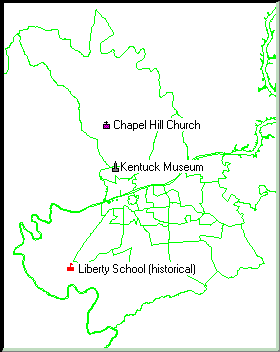
The city of Tuscaloosa has a population of 77,759, including 20,000 students at the University of Alabama. In 1990, 36 percent of all households in the city of Tuscaloosa had very low incomes, including 49 percent of all black households and 54 percent of all Hispanic households. Among very low-income renter households 77 percent had housing problems of some kind. These households had housing problems including: (1) substandard housing; (2) overcrowding; and (3) cost burden (paying more than 30 percent of their income for rent and utilities) or severe cost burden (paying more than 50 percent of their income for rent and utilities). Among very low-income owner households, 747 were severely cost burdened, and 57 percent had housing problems. Fifty-nine percent of very low-income owner households were elderly.
Fourteen percent of all households in Tuscaloosa were considered low income in 1990, including 13 percent of all white households, 18 percent of all black households, and 19 percent of all Hispanic households. Although 36 percent of all low-income households had housing problems, only 4 percent were severely cost burdened. A large proportion--46 percent--were homeowners.
Only 7 percent of households in Tuscaloosa fall into the moderate-income category (earning 81 to 95 percent of the median family income), with more than 50 percent of moderate-income households renting rather than owning their homes. While only 6 percent of the moderate-income renters paid more than 30 percent of their incomes for housing, 20 percent of the homeowners were cost burdened.
In 1990 the number of renter-occupied units exceeded the number of owner-occupied units. Almost one-fourth of all renter-occupied units were single-family homes. The preponderance of rental units is due to the large number of students attending the University of Alabama who live off campus and the relatively high percentage of Tuscaloosa residents who have lower incomes. Overall, 50 percent of all renter households and 19 percent of all owner households had housing problems.



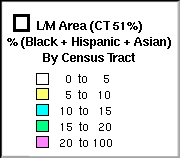
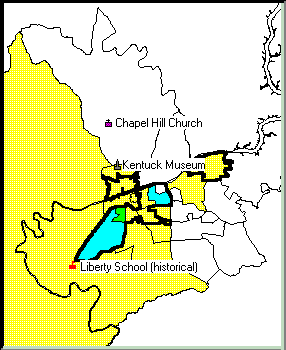

The University of Alabama and its student population of nearly 20,000 represent a major component of Tuscaloosa's economic base. The student demand for housing changes continuously. It is satisfied for the most part by the university with apartments and dormitories and by private developers or the owners of rental units and condominiums. A large number of students, however, are lower income and compete with lower-income families for the few low-cost units available. As a result, many students live in boarding houses or in small apartments that are both plumbing deficient and structurally substandard. Moreover, the demand for rental units in areas close to the university has led to blighted and overcrowded conditions in neighborhoods that had been characterized by owner-occupied, single-family housing.
The construction of a Mercedes-Benz auto assembly plant in eastern Tuscaloosa County is expected to have a major impact on the housing market in Tuscaloosa and in neighboring Jefferson County. The plant will directly employ 1,500 people in high-tech, high-wage jobs, create other manufacturing jobs in affiliated industries, and produce several thousand service- sector jobs within 5 years. While those receiving higher wages from the new jobs should be able to find suitable housing, those working in the lower-paying service industries will have difficulty finding affordable homes. It is also anticipated that unemployed workers from other States who come seeking employment will have difficulty finding low-cost housing. Moreover, if land-use development controls such as zoning and subdivision regulation are not implemented, unsightly and unsafe developments could result.
In the late 1980s, the rental housing market tightened due to the influx of people who came to work in the exploration and drilling of new coalbed methane wells. Between 1987 and 1992, 2,360 new jobs were created in the west Alabama area because of the wells. In 1990 alone, drilling permits were issued for 2,240 new wells. Development of the resource fell sharply in 1991, however, when companies reduced new drilling. This decline caused hundreds of layoffs in the Tuscaloosa area. The resulting out-migration relaxed the tight housing market.
The largest quantifiable need for housing assistance is that of the 4,154 very low-income renter households who were paying more than 30 percent of their income for rent and utilities in 1990. There are vacancies in the current rental housing stock, but these very low-income renters cannot afford to lease these newer units. The units they can afford are often substandard and cannot be repaired without increasing rents. There is a particular shortage of single-family houses in the low- to middle-price range.
Interest rates on mortgage loans reached a 25-year low in 1993 and active buying, selling, and refinancing kept realtors, appraisers, and lenders busy in Tuscaloosa, as elsewhere. While there is an adequate supply of houses for sale to middle- and high-income buyers, very few are affordable for low- and moderate-income households. Low-income households in Tuscaloosa usually cannot afford the costs of a mortgage and home maintenance. Many moderate-income households can, however, if they are given assistance with downpayment and closing costs. In addition, special housing rehabilitation programs are needed to assist low-income renters and homeowners living in substandard units.
Homeless persons in Tuscaloosa are referred to the city's Housing Counseling Program, which arranges for food, shelter, and transportation. Other local agencies, including the Salvation Army, Community Soup Bowl, American Red Cross, Community Service Programs (CSP) of West Alabama, Temporary Emergency Service Program, Indian Rivers Community Mental Health and Retardation Center, Turning Point, and local churches all assist homeless persons on a continuous basis.
In 1993 there were about 200 single mothers with children in Tuscaloosa who did not have adequate nighttime shelter. Four other families were homeless and living in cars or outdoors. The 1990 U.S. Census reported 11 persons living on the streets and 11 in emergency shelters, 6 children in the children's shelter, and 10 women and children in the spouse abuse shelter.
Another major need is to provide one or more additional shelters for families who find themselves suddenly homeless. Such transitional housing would provide a place where residents can maintain some semblance of normal life until they can find permanent homes.
In 1993, persons in need of supportive housing or services included 75 mentally and physically handicapped persons, 854 elderly persons, 29 persons with alcohol or drug addiction problems, and others with AIDS. In 1993, the Community Soup Bowl served lunch to an average of 175 persons each day, most of whom were unemployed men. During the summer, the number of children being fed increases, and during the second half of each month demand for meals rises as households use up their monthly income from Social Security, Supplemental Security Income, Aid to Families With Dependent Children, or Food Stamps.
The largest problem the city faces in providing shelter for the homeless is in supplying appropriate group or independent living quarters for persons who are chronically mentally ill and/or have substance abuse problems. In 1990 there were 120 mentally handicapped individuals residing in Partlow Developmental Center and 12 mentally ill individuals residing in Bryce Hospital who could have left these institutions if adequate housing had been available to them.
Nearly 10 percent of the city's households receive rental subsidies or live in housing units that have federally subsidized rents. The Tuscaloosa Housing Authority (THA) maintains 1,283 units of public housing, and although it is in generally good condition, THA estimates it needs nearly $8,500,000 for rehabilitation. In 1992, 608 households received tenant-based assistance through the Section 8 program, and 1,001 households lived in developments supported by Federal funds.
It is estimated that as many as 15,893 housing units in Tuscaloosa are contaminated with lead-based paint, 9,059 of which are occupied by low- and moderate-income households. The West Alabama District Health Department has screened thousands of children since 1991 and has found over 500 children with elevated levels of lead in their blood. From 1992 through 1994, about 50 children had repeat blood tests that indicated dangerously high levels of lead.
The city's regulations, policies, and procedures related to the development of housing were reviewed to determine if they acted as barriers to providing affordable housing in Tuscaloosa. It was concluded that none acted as a barrier to affordable housing in any significant way, and that they protect the health, safety, and well-being of citizens. The city will take actions to improve the distribution of information concerning the availability of housing programs to promote the development of more affordable housing.
The NIMBY (not in my back yard) attitude of many residents, however, makes it difficult to find locations for the construction of low-income rental housing or homes for mentally handicapped persons. Moreover, it is difficult to locate boarding houses in areas zoned for multifamily construction due to neighborhood opposition.
The city of Tuscaloosa shares the goal that every American family should be able to afford a decent home in a suitable environment. It is the city's intent to follow a strategy that uses all available public and private resources to help provide safe, sanitary, and affordable housing for low-income families and households. The Consolidated Plan addresses: (1) the housing needs of low- and moderate-income households; (2) the supportive service needs of low- and moderate-income households; and (3) infrastructural or physical improvements to the geographical areas of the city considered to be primarily low income. In addition, the city will take actions to improve the distribution of information about housing programs to local agencies and organizations.
However, fostering the creation of new job opportunities is the most important way in which the city can help low-income households achieve a long-term solution to their problems. It is the city's policy to promote the creation of new jobs and training programs by encouraging the expansion of new businesses, industries, and institutions. Moreover, it is the city's policy to provide counseling and referrals to training and job opportunities to unemployed and underemployed persons through the Tuscaloosa Housing Counseling Program.
Tuscaloosa's strategic plan calls for expenditure of almost $22 million in public and private funds to address its housing needs. The following areas have been targeted for attention:
Housing assistance to low-income renters including:
Rehabilitation assistance to low-income homeowners will include CDBG loans and grants to 50 units, Emergency Home Repairs for 75 units, HOME program help by the city for 40 units, weatherization for 250 units, and rehabilitation of 20 units through the Youthbuild program.
Homeownership opportunities will be provided for low- and moderate-income first-time homebuyers using Alabama Housing Finance Authority and HOME programs.
Provision of transitional shelter space and additional emergency shelter facilities and other assistance for homeless persons will use CDBG and Emergency Shelter Grant (ESG) funding.
Provision of additional permanent housing units for mentally and physically handicapped persons, the elderly, and others with special needs will use the Section 811 (handicapped), Section 202 (elderly), HOME, and Supportive Housing programs.
Accessibility to Facilities and Programs for Persons With Disabilities-Persons with disabilities need to be provided with access to public and private facilities and services to the same extent as the general populace.
Nonresidential Historic Preservation Needs-Since Tuscaloosa is 175 years old, there are many structures in the city that are historically and architecturally significant that require restoration.
The provision of infrastructure, the existence of adequate housing, and the availability of sites for industrial and commercial development will play a vital role in the growth of the Tuscaloosa area. Planning is the key to ensuring that the residents of Tuscaloosa are afforded the quality of life that accompanies such growth.
Many public, private, and nonprofit agencies, organizations, and businesses are part of the overall institutional structure necessary to successfully carry out the city's Consolidated Plan. Public institutions include HUD, the Alabama Department of Economic and Community Affairs, the Alabama Housing Finance Authority, the city of Tuscaloosa, and the Tuscaloosa Housing Authority. Nonprofit organizations include CSP of West Alabama, Inc., the Tuscaloosa County Park and Recreation Authority, the Tuscaloosa County Parking and Transit Authority, the Salvation Army, and Indian Rivers Community Mental Health and Mental Retardation Center. In addition, at least two local financial institutions have worked with CSP of West Alabama, Inc., to develop new housing for low-income households, and six local banks are participating in the Community Development Loan Fund program being operated by CSP.
The city's housing assistance and community development programs are funded from a variety of sources, including the Federal Government's HOME, HOPE 3, CDBG, ESG, Supportive Housing Demonstration, Shelter Plus Care, and Section 202 and 811 programs. The Alabama Housing Finance Authority provides support through the Mortgage Revenue Bond, Downpayment Assistance, and HOME programs. Monies from General Fund Revenues and Urban Development Action Grant Loan Repayments provide additional resources.
Despite the success of past housing assistance efforts, there is a need to provide information on Federal housing programs to local service agencies. In addition, organizations such as churches might participate in housing assistance programs if their efforts could be coordinated by a central agency or committee. Also, the staff of the city's Community Planning and Development Department needs additional training in the financial aspects of public-private housing ventures.
Some gaps exist in the availability of funds to provide housing assistance. Most notable is the shortage of Section 8 rental subsidies for eligible households. In addition, there are homeless families living in cars or elsewhere outdoors in Tuscaloosa. Local social service workers comment that persons being released from mental health facilities are in danger of becoming homeless because there is a delay in the receipt of financial assistance through State and Federal programs.
The Community Planning and Development Department has ongoing contact with local governments and government agencies. For example, the city of Tuscaloosa is a member of the Metropolitan Planning Organization (MPO), which is comprised of local government officials and whose purpose is to prioritize transportation needs within the urban area of Tuscaloosa County. The directors of the Tuscaloosa Community Planning and Development, Transportation, and Engineering Departments attend monthly meetings of the Technical Coordinating Committee of the MPO comprised of representatives from the city of Northport, Tuscaloosa County, West Alabama Planning and Development Council, and Alabama Department of Transportation. This committee discusses transportation issues and advises the MPO on transportation projects within the urbanized area.
The city of Tuscaloosa also coordinates with the Tuscaloosa County Planning and Community Development Department concerning comprehensive planning and the future implementation of zoning, subdivision regulations, and building inspection services. Predesign conferences for new and updated subdivision preliminary plats are frequently held between the Tuscaloosa Transportation Director, Storm Drainage Engineer, Planning Director, City Engineer, Chief Inspector, Fire Chief, Tuscaloosa County Engineer, Tuscaloosa County Health Department, and County Planning and Community Development Director.


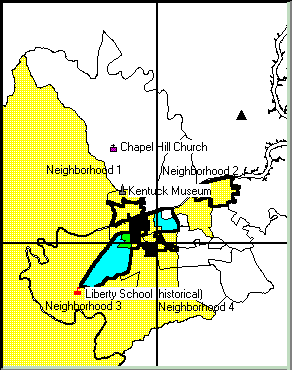

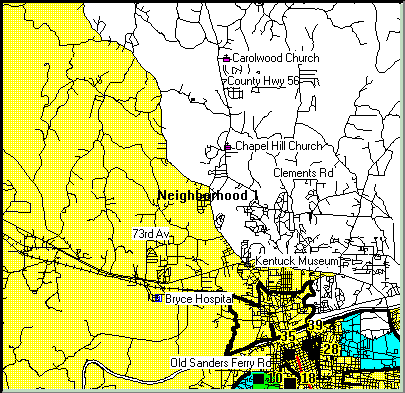

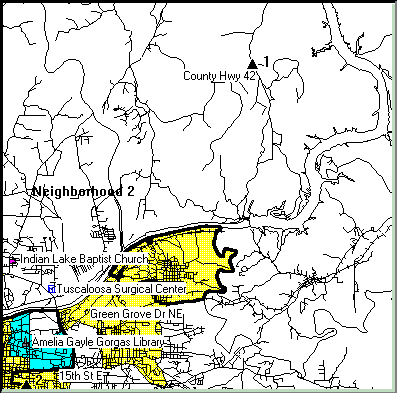



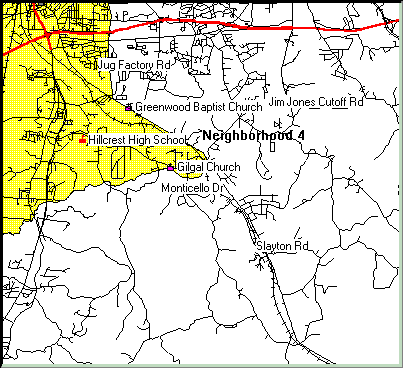

The action plan covers activities to be undertaken during a 1-year period of time beginning on April 1, 1995, with funds expected to be available under the CDBG, ESG, HOME, and other programs. The city expects to utilize CDBG funds totaling $1,649,000 and HOME funds totaling $678,263. The city also plans to apply for ESG funds. Below are some of the projects to be undertaken in the 1-year plan:
For a complete list of proposed projects for Tuscaloosa, follow this link.